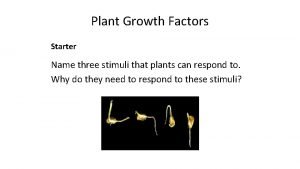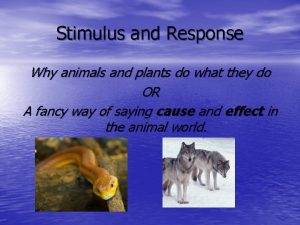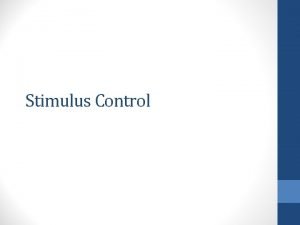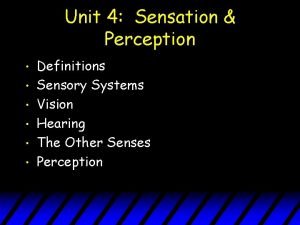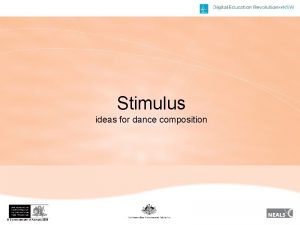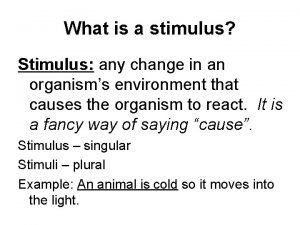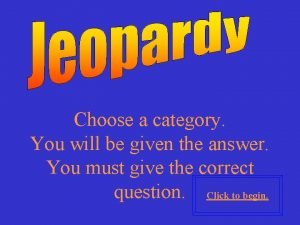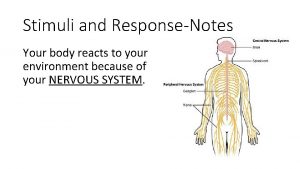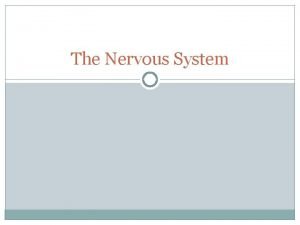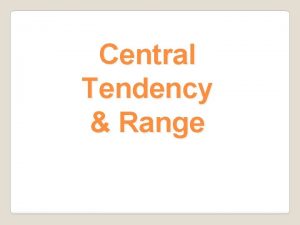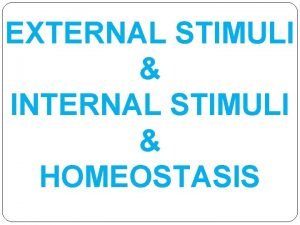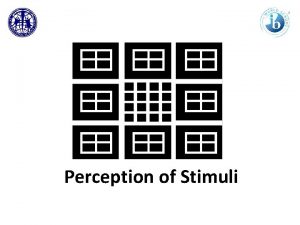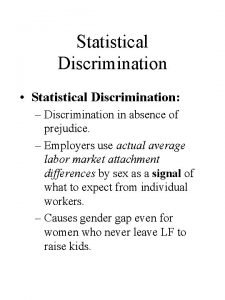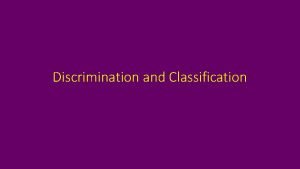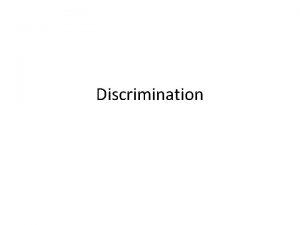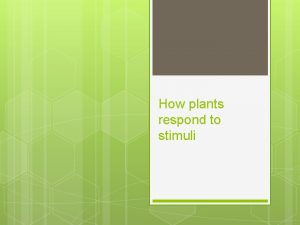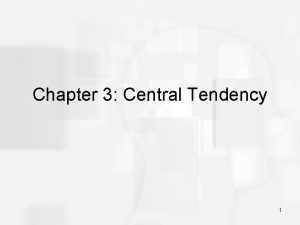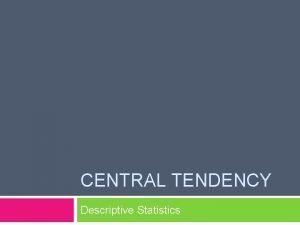GENERALIZATION DISCRIMINATION Generalization Tendency to respond to stimuli
















- Slides: 16

GENERALIZATION & DISCRIMINATION • Generalization: Tendency to respond to stimuli similar to the CS • Discrimination: Occurrence of responses only to a specific CS. 1

CONDITIONED EMOTIONAL RESPONSE • An emotional reaction of a specific stimulus is learned through CC. • Conditioning Little Albert to fear a white rat. John B. Watson 2

COUNTER CONDITIONING • Extinction of an undesirable response to a stimulus through the introduction of a more desirable response 3

OPERANT CONDITIONING • Also known as instrumental conditioning • An organism operates on its environment to produce a change. • «Puzzle box» -Edward Thorndike • The law of effect: reinforcers promote learning, whereas punishers lead to the unlearning of responses. 4

Cellular Level of Operant Conditioning • LTP • Repeated reinforcement insures better, more numerous and more efficient connections between neurons • Reward increases uptake of midbrain dopamine in the Nucleus Accumbens (NAcc) • Higher NAcc activation during encoding = greater likelihood of recall • * increased attention and increased contextual memory

Skinner’s box(1938) • Reinforcer is an event or stimulus that increases the frequency of the response • Positive reinforcers are events or stimuli that are presented after the target response occurs. • Negative reinforcers are events or stimuli that are removed because a response has occurred.

7

POSITIVE REINFORCEMENT • occurs when a response is followed by a positive reinforce • makes the behavior more likely to occur in the future. • Shaping: reinforcement of successive responses that more closely resemble the target response - “Successive Approximation” 8

NEGATIVE REINFORCEMENT • occurs when a target behavior (response) is followed by removal or reduction of a negative reinforcer 9

EXTINCTION IN OPERANT CONDITIONING • Occurs when a behavior is no longer followed by a reinforcer.

POSITIVE PUNISHMENT • use of a physically or psychologically painful event as a punisher. 11

NEGATIVE PUNISHMENT • loss of reinforcement as a consequence of an inappropriate behavior.

DRAWBACKS TO USE AVERSIVE METHODS • Pain-induced aggression – redirected aggression- fear induced aggression • High arousal level • Hyperactivity • Depression • Learned helplessness • The aversive quality of punishment may condition a fear response to the person administering it. • Generalization – using newspaper for house training

EFFICIENT TRAINING REQUIRES: PERFECT TIMING APPROPRIATE REINFORCER STRONG STIMULUS 14

CONCLUSION • Learning is important to survive • Learning requires memory • Learning takes place in different regions • Two types of learning: Associative & Non-associative • Positive = Add to environment • Negative = Remove from environment

THANK YOU FOR YOUR ATTENTION
 What are three stimuli that plants respond to
What are three stimuli that plants respond to Stimulus in animals
Stimulus in animals Response prompt vs stimulus prompt
Response prompt vs stimulus prompt The perceptual tendency to group together stimuli
The perceptual tendency to group together stimuli What is stimuli in dance
What is stimuli in dance Tropism
Tropism Level of consciousness assessment
Level of consciousness assessment Callista roy
Callista roy The most potent stimulus for erythropoiesis
The most potent stimulus for erythropoiesis Which drug dampens responsiveness to irrelevant stimuli
Which drug dampens responsiveness to irrelevant stimuli Program common stimuli aba
Program common stimuli aba Noxious stimuli
Noxious stimuli The neuron process that normally receive incoming stimuli
The neuron process that normally receive incoming stimuli Why the body responds to stimuli.
Why the body responds to stimuli. What is stimuli in nervous system
What is stimuli in nervous system Humoral neural and hormonal stimuli
Humoral neural and hormonal stimuli Free operant preference assessment
Free operant preference assessment
